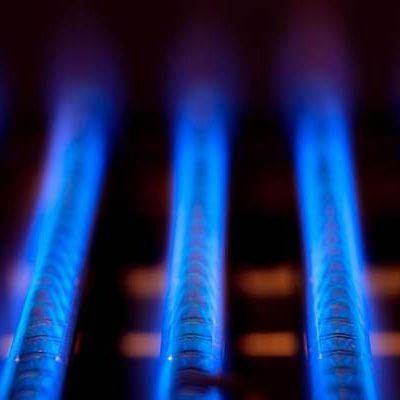Although there are exceptions, most residential heating, cooling and ventilation (HVAC) systems use either a single-stage or two-stage furnace to produce heat.
The \”stage\” of a furnace refers to its method of operation. While either a single-stage or two-stage furnace can warm your home, they aren’t necessarily the same.
Whether you’re purchasing a new home or looking to upgrade your current home’s HVAC system, you should familiarize yourself with the differences between these two types of furnaces.
What Is a Single-Stage Furnace?
A single-stage furnace is a type of HVAC furnace that’s characterized by a fixed valve that opens and closes, depending on the thermostat settings.
When you raise the temperature on the thermostat, the valve opens, thereby allowing fuel – typically natural gas or propane gas – to enter the furnace where it’s ignited by the pilot light.
All single-stage furnaces use a single-speed blower. In other words, the blower is either on or off. It’s not able to adjust speeds, regardless of the thermostat’s settings.
What Is a Two-Stage Furnace?
A two-stage furnace is essentially the same as a single-stage furnace but with one major difference: it features a variable-speed blower.
As a result, the speed at which the blower works can change. During the winter, the blower may work faster to quickly warm your home. During the fall, it may run slower to save energy while still achieving a desirable indoor temperature.
In addition to a variable-speed blower, two-stage furnaces also support three positions for the valve. The valve can be open, closed or partially open/closed. If the blower isn’t running at full speed, the valve may be partially open/closed.
The Rise of Two-Stage Furnaces
Two-stage furnaces have become increasingly popular among homeowners in recent years because of their unique benefits.
When compared to single-stage furnaces, two-stage furnaces are more energy-efficient. As the blower slows down, it naturally consumes less energy.
Two-stage furnaces are also quieter than their single-stage counterparts. With their variable-speed blower, two-stage furnaces don’t produce the same amount of noise as single-stage furnaces.
Many homeowners will agree that two-stage furnaces produce more even and consistent heat than single-stage furnaces. For these reasons and others, the use of two-stage furnaces is on the rise.
The downside to two-stage furnaces is their cost. Not surprisingly, they tend to cost more than single-stage furnaces.
Considering their energy-efficient benefits, though, they can actually save you money in the form of lower utility bills.
If you are experiencing a problem with your air conditioning or heating call us at 512-336-1431 to schedule an appointment. We’ll be glad to come out and take a look at the issue.
1431-183 A/C & Heating proudly serves Round Rock, Georgetown, Cedar Park, Pflugerville, Leander, Liberty Hill, and North Austin.

